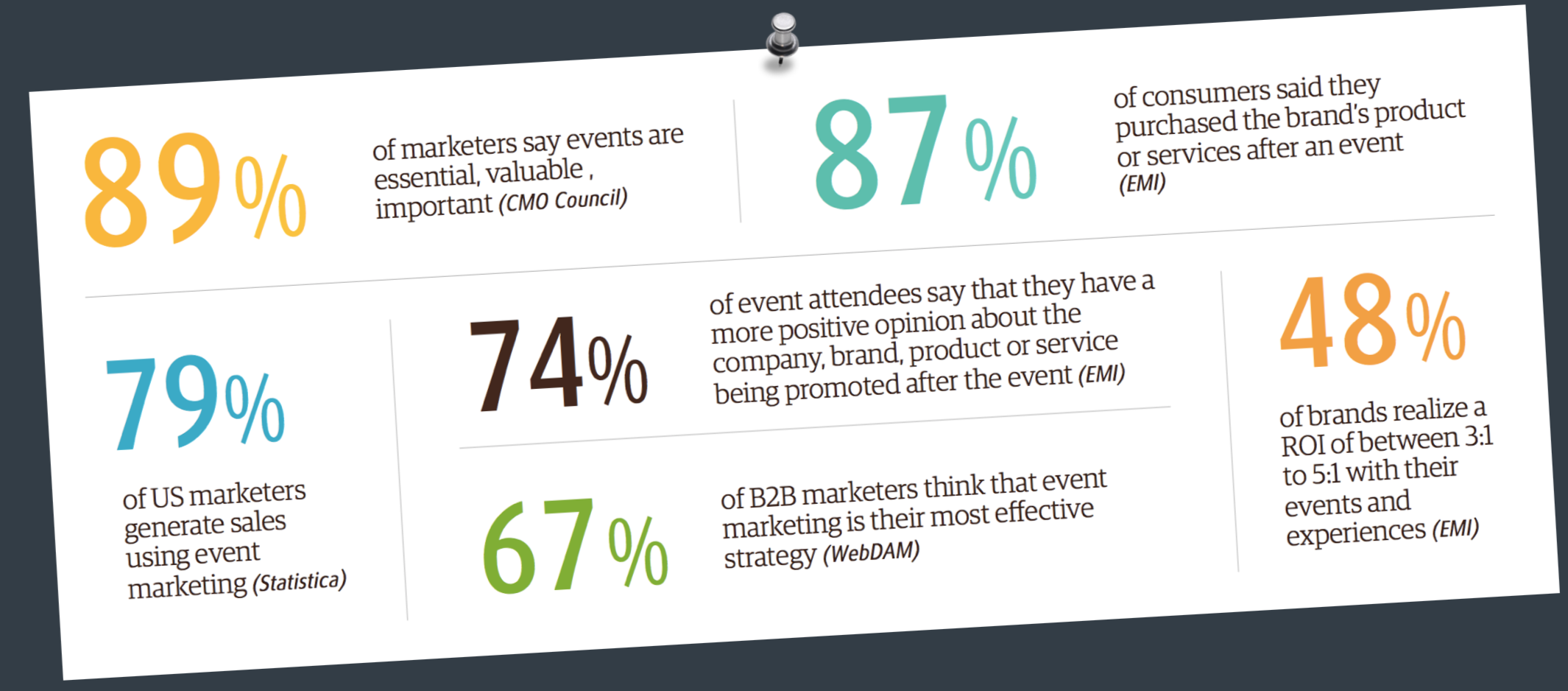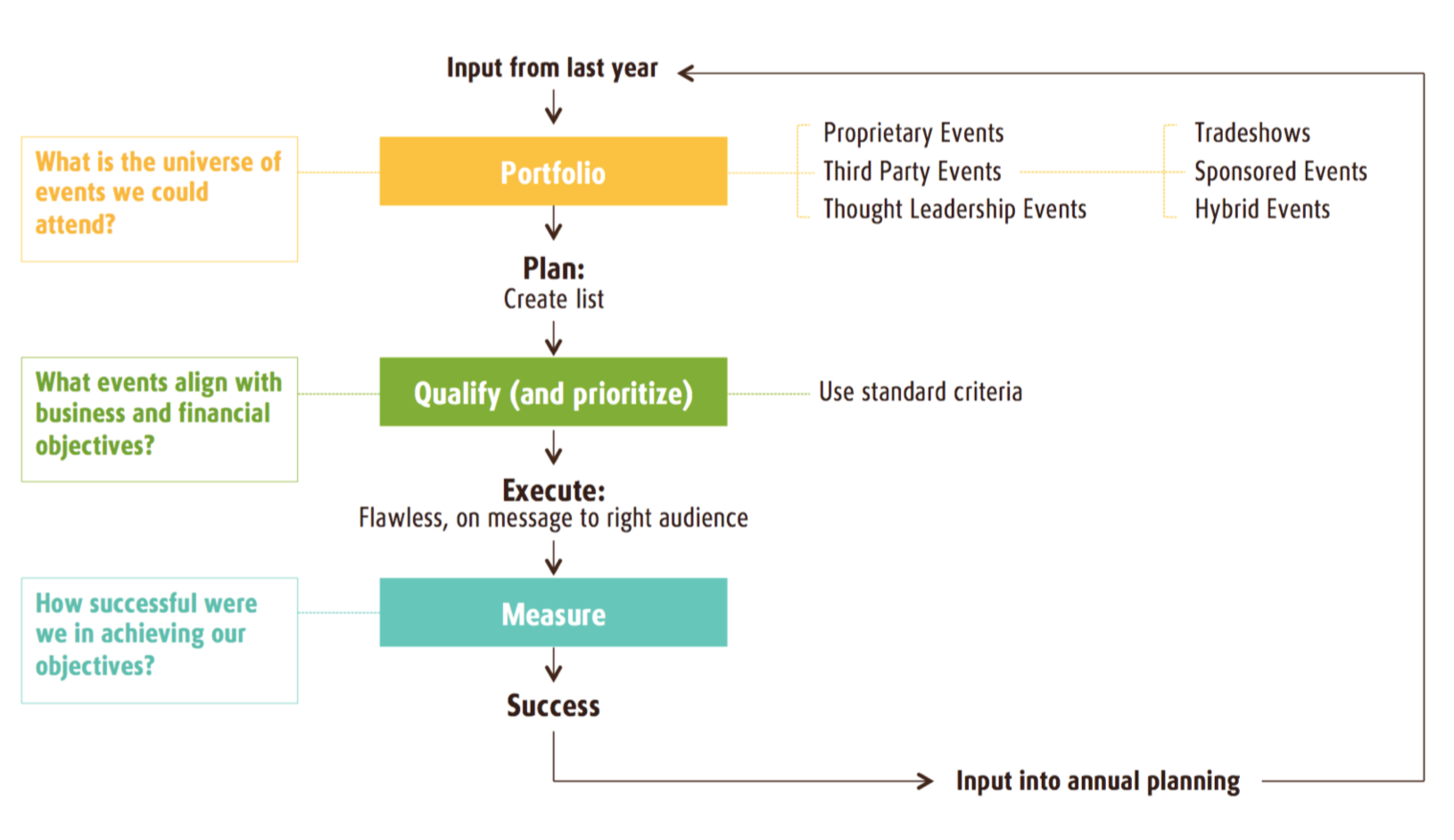Experiential Marketing and You!
TL;DR: Check out the 5 Steps for optimizing experiential marketing at the end.
Experiential marketing isn't about events for throngs of swag-happy attendees, nor is it about shutting down Times Square for a major reveal or promotion that inevitably costs more than it should...OK, well it isn't ONLY about that.
In all seriousness, events and experiences, like those mentioned above, tend to have the stigma of waste and a lack of efficacy. Few decision makers think about how the overall benefit of experiential marketing plays in two major areas: top line revenue growth and increasing brand valuation by building on that intangible equity.
"Experiences don't build my brand." False.
The Pareto principle (otherwise known as the 80-20 rule colloquially) has grown its roots into the experience marketing space. Based on a 2017 report from Forrester, 78% (so, 80%) of B2B marketers claim that experiential marketing was their most expensive line item in their budgets. However, in that same population of participants, 20% stated that they will increase their experience spending in the next year.
So, these types of marketing executions are expensive, but they are highly popular and indeed seen as necessary. Yet, for whatever reason, experience marketing does not get the same degree of attribution to business results that other tactics get.
So, let's do a little Myth Busting and show how experiential marketing stacks up:
89% of marketers say events are essential, valuable and important (CMO Council)
87% of attendees said they purchased a brand's product or service after an event (EMI)
74% of attendees say they have a more positive opinion of a brand after an event (EMI)
67% of marketers think that experiences are their most effective strategy (WebDAM)
This is full-funnel impact: from awareness and perception to lead generation and conversions. So, the real question is, why are marketers so resistant to marketing experiences to their customers?
To think small is to be small
If marketers think of experiential marketing as a tactic, it will be tactical. An alarming statistic from McKinsey reports that 67% of marketers will budget for events only because they have customer or institutional expectations that it exist. What that says is that over half today's businesses don't plan their event and experience marketing as a part of their holistic go-to-market strategy.
Even more alarming is that only 30% of marketers state that events are one-off occurrences rather than integrated programs, or, 1 out of 3 experience executions have no idea if they will be leveraged again. Not only does this waste money on an asset that can be amortized, but you write a book and stop right after the introduction.
Treating in-person events as marketing tactic fails to link it to any meaningful business narrative, leaving them as outliers in the marketing mix. Forrester found that 50% of B2B marketers cite competitors' actions as main motivators for producing events. So, with no strategic motivator to cite, events can lack focus, direction, goals and effectiveness.
5 Steps to show value and prove effectiveness
There are five steps that make up my experiential marketing optimization checklist or EMOC (whew, ok, we can workshop the name):
Commit to a strategy - This is the most important aspect to your activation. There has to be an overall strategy that stitches these things together. A one-off approach begets a one-off assessment. Investments are therefore not made to properly measure impact and you're left with an execution that can look great--and perhaps generate a ton of business value--but can offer no proof as to its potential.
Control the experience - From one end to the other, the experience must be strategically compliant in order to render proper value to marketing metrics. Having participants develop or enhance their experience may sound good, but lack of control means potential harm to the brand house, business goals and your investment.
Produce and promote with data - Leverage owned or purchased data to drive insights that build better experiences. Better experiences do not necessarily mean more expensive experiences. The data-based insights will actually enhance relationships and engagements in a more efficient manner meaning that every dollar has more accountability.
Foster alignment across groups - A well oiled machine works without friction, so do aligned teams (I didn't want to continue the metaphor to "well oiled teams"). Experience marketing initiatives that consider the broad defendants will invariably get better results leading up to and during the experience. As best as possible, align incentives, be transparent and build something beautiful...together.
Support digital integrations - We live in a digital world which means that any experience should have the ability to translate seamlessly from physical to digital easily. Leveraging partners that support digitizing and enhancing the experience with technology, data and digital means you can develop more compelling creative experiential executions, gain better insights leading up to, during and after the event and continue conversations and build relationships well beyond that single moment in time.
The Last Bastion
Your experiences provide a blank canvas that is waiting for your brand to make its mark. As relationships become more commoditized through digital and social platforms, experience marketing is one of the last bastions that allow brands to share their truths, connect meaningfully with customers and build their businesses.



